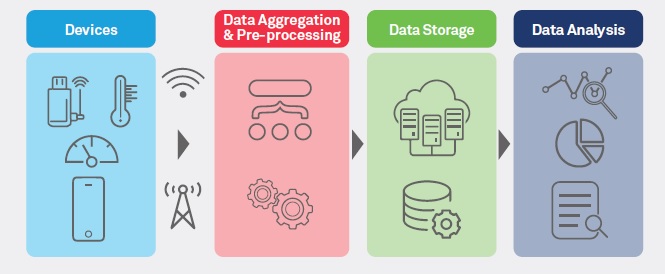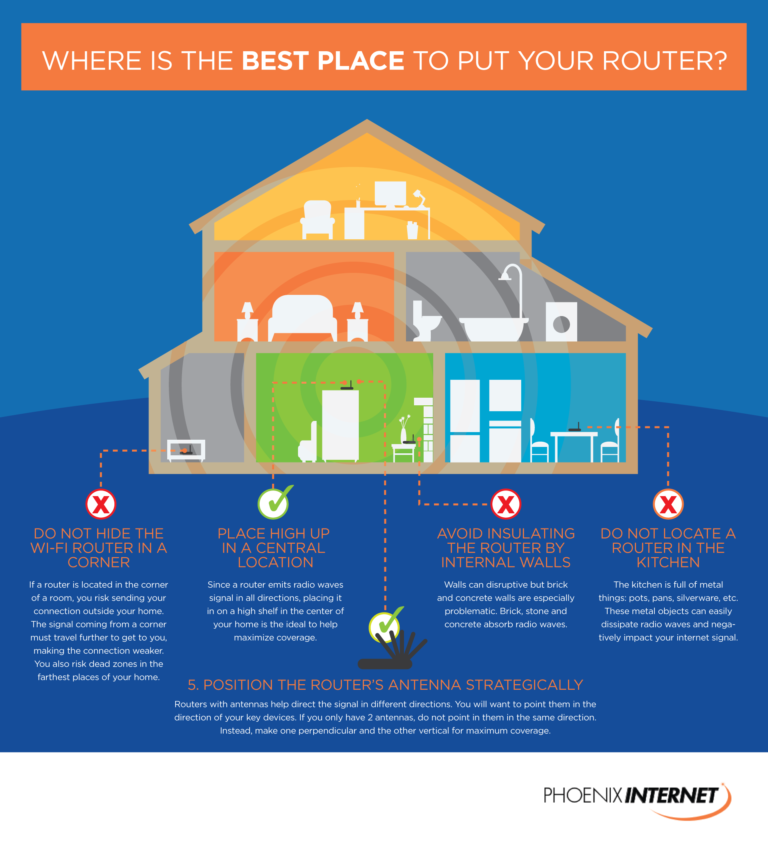What Are The Applications Of IoT Devices In Healthcare?
The Internet of Things (IoT) has revolutionized how we interact with technology, and healthcare is no exception. IoT devices and systems have been used in healthcare to improve patient care, streamline medical processes, and increase access to healthcare services. IoT devices can be used to monitor vital signs in real-time, measure drug dosages, and provide remote medical care. IoT also enables doctors and nurses to access data quickly, accurately, and securely, while allowing patients to access their medical records from any location. IoT devices and systems have the potential to improve patient outcomes and reduce healthcare costs, making them invaluable tools in the modern healthcare industry.
Overview of IoT in Healthcare
The Internet of Things (IoT) is rapidly transforming the healthcare industry, enabling better patient care and providing greater efficiency and cost savings. IoT devices are providing real-time data and insights to help healthcare providers make more informed decisions. With IoT-enabled devices, healthcare providers can improve patient outcomes, reduce costs, and increase operational efficiencies. From wearables to connected medical devices, IoT is making a significant impact on the healthcare industry.
The applications of IoT in healthcare are vast. Wearables are allowing patients to monitor their own health, giving doctors the ability to remotely monitor patients in real-time. Connected medical devices are providing data to help healthcare providers make more informed decisions. IoT is also helping healthcare providers improve patient safety, reduce readmissions and manage chronic conditions. In addition, IoT is helping healthcare providers improve operational efficiency by automating processes such as patient scheduling, medication management, and asset tracking.
The potential of IoT in healthcare is huge, and we are just scratching the surface of what is possible. IoT devices are creating new opportunities to improve patient care, reduce costs, and increase operational efficiency. As IoT continues to evolve, healthcare providers will be able to leverage the power of IoT to provide better care, reduce costs, and improve outcomes.
Benefits of Using IoT Devices in Healthcare
The Internet of Things (IoT) has revolutionized healthcare. IoT devices are used to monitor, diagnose, and treat patients, as well as to provide care and support to healthcare professionals. These devices have made it possible to provide personalized care to patients, improve the quality of care, and reduce the costs associated with providing it. IoT devices can be used to track vital signs, provide real-time patient data, and even detect diseases before they become symptomatic. IoT devices provide a variety of benefits to healthcare professionals and patients alike, including improved communication, remote monitoring, and better diagnosis and treatment. With the help of IoT devices, healthcare providers can provide more efficient, accurate, and cost-effective care. By leveraging IoT technology, healthcare providers can improve the quality of care that they provide and reduce costs associated with providing it. IoT devices also allow patients to take control of their own health and monitor their conditions from anywhere in the world. With the help of IoT devices, healthcare providers and patients alike can benefit from improved patient care and cost savings.
Examples of IoT Devices in Healthcare
The Internet of Things (IoT) has revolutionized the healthcare industry, by introducing new devices and applications that can improve patient care and streamline processes. IoT devices are changing the way healthcare is delivered and managed, allowing for more efficient and effective care. In this article, we will explore some of the most popular IoT devices and applications in healthcare.
Smart Beds: Smart beds are a type of IoT device that can monitor a patient’s vitals, such as heart rate, respiration rate, and body temperature. This data can be used to detect any irregularities in the patient’s health or physical condition. Smart beds also provide comfort features such as adjustable firmness and temperature control, and some even have features such as massage and physical therapy.
Smart Scales: Smart scales are another type of IoT device that can track a patient’s weight, body mass index, and body composition. This information can be used to monitor a patient’s progress over time and make adjustments to their diet and exercise plan.
Smart Medical Devices: Smart medical devices such as insulin pumps and blood pressure monitors are becoming increasingly popular in healthcare. By connecting to a patient’s smartphone, these devices can track and record data, alerting the patient and their care team to any changes.
Smart Wearables: Wearable technology such as fitness trackers, smartwatches, and medical alert devices are becoming increasingly popular in healthcare due to their ability to track and monitor a patient’s health. Smart wearables can track a patient’s activity, heart rate, and other vital signs, and can alert the patient and their care team of any irregularities.
Robots: Robots are being used in healthcare to automate many tasks, such as stocking shelves and delivering medication. They can also be used to assist with surgeries, as they are able to make precise movements and can be programmed to follow specific instructions.
These are just a few of the applications of IoT devices in healthcare. As technology continues to advance, so too will the potential for IoT devices to revolutionize the healthcare industry.

Challenges of Implementing IoT Devices in Healthcare
The Internet of Things (IoT) has revolutionized the way healthcare providers and patients interact and exchange data. IoT devices have immense potential to improve healthcare delivery, including the monitoring of vital signs, patient compliance, and remote patient care. However, there are some challenges to consider when deploying IoT devices in healthcare.
One of the major challenges is data security. With the implementation of IoT devices, the risk of data breaches and cyber-attacks increases significantly. Healthcare providers must ensure that their systems are secure and that data is protected from any malicious parties. Additionally, they must adhere to applicable regulations, such as HIPAA, to ensure patient privacy.
Another challenge is scalability. IoT devices are often designed with limited scalability, making it difficult to scale up operations as needed. Healthcare providers must also consider the cost of expanding their systems, as well as the time and resources required. Furthermore, they must ensure that the devices can handle the workload and that they are compatible with existing systems.
Finally, healthcare providers must ensure that the IoT devices they are using are reliable. As the technology is still relatively new, there is a risk of malfunction or failure. This can lead to significant delays in the delivery of care, as well as a decrease in patient satisfaction. Healthcare providers must evaluate the devices they are using and ensure that they are up to date and functioning properly.
The implementation of IoT devices in healthcare can provide a wealth of benefits, but it also comes with a unique set of challenges. Healthcare providers must consider data security, scalability, and reliability when deploying IoT devices, and ensure that their systems are secure, cost-effective, and reliable.
Security Considerations for Healthcare IoT Devices
The healthcare industry is increasingly turning to the Internet of Things (IoT) to help streamline operations, reduce costs, and improve care. But as with any new technology, security is a major concern. IoT devices can be vulnerable to attack and data breaches, so it’s important to consider security when deploying them in healthcare settings. In this blog, we’ll take a look at some of the key security considerations for healthcare IoT devices.
First, healthcare organizations should implement a risk-based security strategy that accounts for the potential risks associated with IoT devices. This should include measures such as encryption, authentication, and monitoring. Additionally, organizations should ensure that all IoT devices are securely configured and regularly updated with the latest security patches.
Organizations should also be aware of the potential for malicious actors to use IoT devices to launch attacks. It’s important to maintain a secure perimeter around IoT devices, and monitor all traffic for signs of suspicious activity. Additionally, organizations should be aware of the potential for IoT devices to be used as a launching point for attacks against other systems.
Finally, organizations should ensure that all data collected by IoT devices is properly secured. This includes ensuring that all data is encrypted in transit and at rest, and that access is limited to authorized users. Additionally, organizations should have a plan in place for securely storing and disposing of data collected by IoT devices.
By following these security considerations, healthcare organizations can ensure that their IoT devices are secure and compliant with regulatory standards. With proper security measures in place, healthcare organizations can make the most of the benefits offered by IoT devices.
Summary and Conclusion
The Internet of Things (IoT) has revolutionized the healthcare industry by allowing healthcare providers to remotely monitor patients and deliver better quality care. IoT devices have enabled healthcare providers to more accurately diagnose and treat patients, as well as provide more personalized treatment plans. IoT devices are being used to monitor vital signs, track medications, and detect early signs of illness. IoT devices are also being used to improve hospital operations, reduce costs, and increase patient satisfaction. IoT devices can be used to improve patient monitoring, improve drug delivery, and provide remote patient care. In addition, IoT devices can be used to improve healthcare data security and accuracy, allowing healthcare providers to provide more accurate and timely information to patients. The applications of IoT devices in healthcare are varied and provide numerous benefits to healthcare providers and patients alike.
FAQs About the What Are The Applications Of IoT Devices In Healthcare?
1. What types of healthcare applications are most commonly used with IoT devices?
The most common healthcare applications of IoT devices are patient monitoring, medical diagnostics, real-time monitoring of vital signs, remote patient monitoring, and connected medical devices.
2. What are the benefits of using IoT devices in healthcare?
The benefits of using IoT devices in healthcare include improved patient outcomes, better quality of care, faster diagnoses, and lower costs. Additionally, IoT devices can help healthcare professionals provide better patient care, increase efficiency, reduce paperwork, and improve patient safety.
3. Are IoT devices secure?
Yes, IoT devices can be made secure with the use of authentication protocols and encryption. Additionally, healthcare organizations should take steps to ensure that the data collected from these devices is secure and not susceptible to malicious attacks.
Conclusion
The applications of IoT devices in healthcare are numerous, and have the potential to revolutionize the way healthcare is managed. IoT devices can provide real-time patient data to healthcare professionals, allowing them to offer better and more timely care. They can also be used to monitor patient health, and to provide remote access to doctors and other medical professionals. IoT devices can also be used to improve efficiencies in healthcare facilities, reduce costs, and improve patient outcomes. As the technology continues to develop, there will be more opportunities for healthcare providers to use IoT devices to improve patient care.



